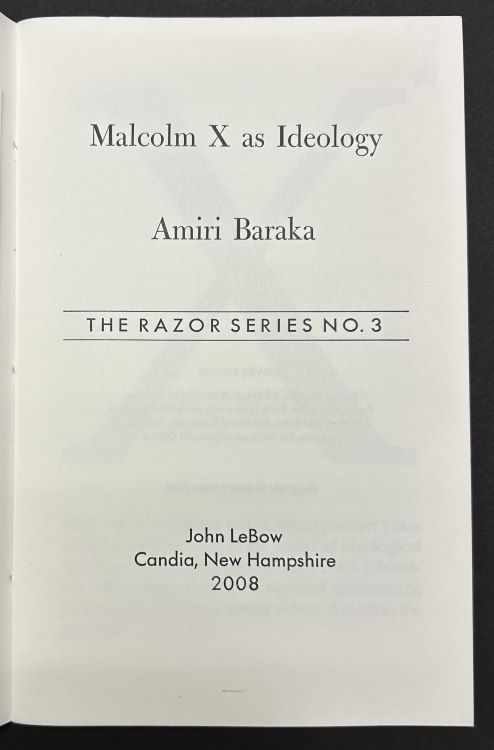Soul of the Butterfly considers the relationship between Chicory magazine (1966-1983) and Black Arts Activism in the city of Baltimore. Amiri Baraka’s founding of the Black Arts Repertory Theatre in Harlem following the assassination of Malcolm X in 1965 is often referred to as the beginning of the Black Arts Movement. As Baraka reflected in 1985, this was a “movement by young, [B]lack artists in the 60s to create an art, a literature, that would fight for [B]lack people’s liberation with as much intensity as Malcolm X our ‘Fire Prophet’ and the rest of the enraged masses who took to the streets” (“The Wailer”). Chicory is an example of that fight.
Amiri Baraka, Malcolm X as Ideology. Innerer Klang Press, 2008.
Malcolm X remained a key inspiration for Baraka, as demonstrated by his publication, Malcolm X as Ideology.
Theodore Harris, “Malcolm X as Ideology” cover art draft circa 1992. MSS 0699 Amiri Baraka Papers.
Theodore Harris’s draft cover art showcases various political concerns of the Black Arts Movement, specifically Black liberation and uprisings protesting the murder of Black people by law enforcement officers and terrorist groups like the Ku Klux Klan.
Sonia Sanchez, Liberation Poem. Broadside Press,1970.
Sonia Sanchez’s Liberation Poem, published by Broadside Press, offers the perspective of a Black woman involved in the Black Arts Movement.
Tia Blassingame, “Yuvette’s Purse,” O.P. Box Set #2. Primrose Press, 2018.
The contemporary Black Lives Matter movement continues to protest the murder of Black people by police, evidenced by Tia Blassingame’s “Yuvette’s Purse” poem and print. Blassingame is both a poet and a printer, and her works often explore the relationship between message and medium.







